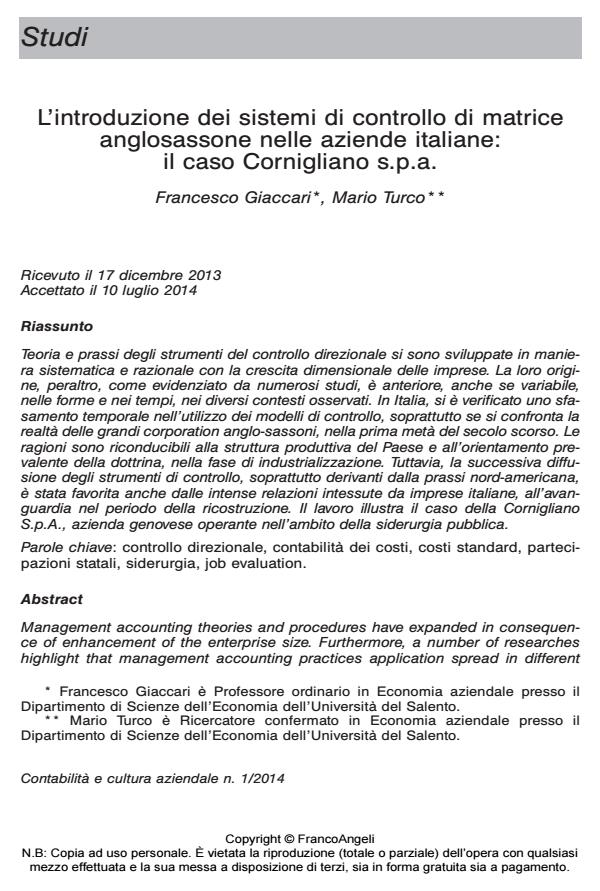L’introduzione dei sistemi di controllo di matrice anglosassone nelle aziende italiane: il caso Cornigliano s.p.a.
Journal title CONTABILITÀ E CULTURA AZIENDALE
Author/s Francesco Giaccari, Mario Turco
Publishing Year 2015 Issue 2014/1
Language Italian Pages 20 P. 13-32 File size 106 KB
DOI 10.3280/CCA2014-001003
DOI is like a bar code for intellectual property: to have more infomation
click here
Below, you can see the article first page
If you want to buy this article in PDF format, you can do it, following the instructions to buy download credits

FrancoAngeli is member of Publishers International Linking Association, Inc (PILA), a not-for-profit association which run the CrossRef service enabling links to and from online scholarly content.
Management accounting theories and procedures have expanded in consequence of enhancement of the enterprise size. Furthermore, a number of researches highlight that management accounting practices application spread in different ways and periods. In Italy there was a gap in comparison with the anglo-saxon experience because of industrial underdevelopment and management accounting theories. Nevertheless, after the second post-war management practices spread due to the relationships linking anglo-saxon corporations and Italian public equity holding. The paper deal with a basic example that involved an innovative Italian steel corporation, the Cornigliano S.p.A., whose management had a leading role for the renewal of Italian industry.
Keywords: Management accounting, cost accounting, standard cost, public hoding, steel industry, job evaluation.
Francesco Giaccari, Mario Turco, L’introduzione dei sistemi di controllo di matrice anglosassone nelle aziende italiane: il caso Cornigliano s.p.a. in "CONTABILITÀ E CULTURA AZIENDALE" 1/2014, pp 13-32, DOI: 10.3280/CCA2014-001003